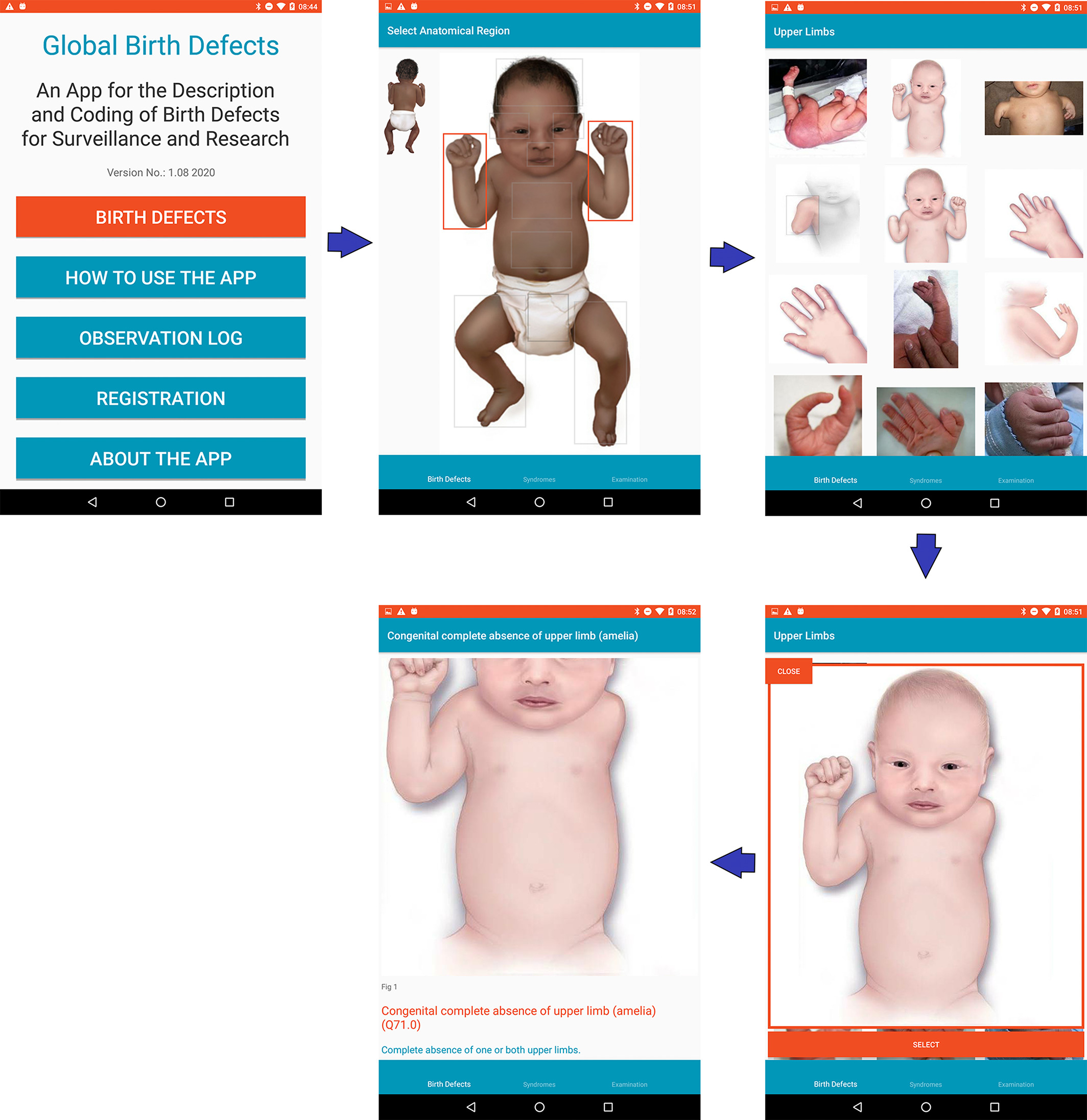Ulster University
The aim was to develop an easy to use app for non-specialist healthcare workers in low and middle income countries (LMICs) to allow them to access and share accurate information about externally visible congenital anomalies. This enables LMIC governments to allocate resources needed to improve the quality of life for those children with visible anomalies.
The medical codes, images, videos and user flow were identified by the research consortium (the International Committee for Congenital Anomaly Surveillance Tools) and BioMedical’s role was to develop an app that could be easily used by the target audience.

Image credit: Global Birth Defects, Volume 113, issue 14, available under Creative Commons 4.0 license
The challenge
The Global Birth Defects Description and Coding (GBDDC) app is for health workers in low resource environments including sub-Saharan Africa, Latin America and Asia, where workers have varying medical expertise and technical ability.
Minimising barriers to access was a priority, including:
- intuitive, easy to use interface
- possible to use without continuous internet access
- translations for all identified user languages
- available for mobile phones and tablets
- available for Android and iPhone OS
In addition, the app needed robust security to support the anonymous upload of case data from the mobile phone or tablet to a secure server, for use by the surveillance system data centre.
The solution
The user interface is intuitive: it lets a user tap a region of the body and then displays a range of images so they can choose the congenital anomaly that most closely resembles what they observe. An important part of development was ensuring the app loads images and videos quickly on a variety of devices and in areas where internet connection is unreliable. To facilitate this, the app was written in C# with Xamarin.ios and Xamarin.android using Visual Studio for MAC IDE (all Microsoft).
The app also allows multiple user accounts on one device, because in hospital settings one tablet is often shared by many workers. This keeps data secure between different user accounts and makes it easy to use even when technical resources are scarce.
The client originally planned for one app to cover all use cases. However, we advised that to balance the competing requirements for accessibility and security when uploading case data, two versions of the app were needed.
- The basic version does not allow recording of data and can be registered with a code made easily available through the Global Birth Defects website.
- The surveillance version allows anonymous recording of data for each baby which is sent back to a secure server: each institution with users of the app is given a unique code, allocated only once the necessary ethical approvals are in place.
The results
The Global Birth Defects Description and Coding app achieved a Merit Award in the 4th Commonwealth Digital Health Awards 2020 in the Maternal and Neonatal Health category.
The app was made available from the Google Play Store and Apple App Store in December 2019 and within a year the ‘Basic’ version of the app had been downloaded in 39 countries, with no reports of problems with the technology.
The Basic version of the app has gone through expert review, with the majority of reviewers finding the app easy to access and use. 58.5% of reviewers evaluated the app as easy to download and 66.5% that it was easy to register to use it. The article reporting these findings was also awarded the James G. Wilson Publication Award, which is given each year for the best paper published in the Birth Defects Research journal [1].
References
[1] Dolk, H, Leke, AZ, Whitfield, P, et al. Global birth defects app: An innovative tool for describing and coding congenital anomalies at birth in low resource settings. Birth Defects Research. 2021; 113: 1057– 1073 (https://doi.org/10.1002/bdr2.1898)
